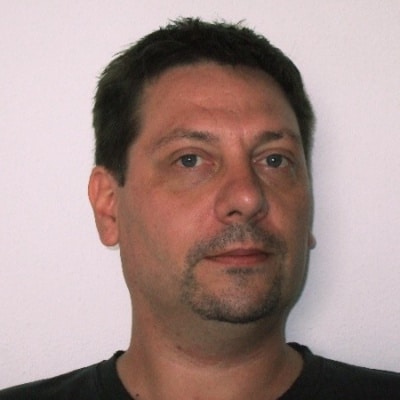
Sebastien Caille is the IT and Market Intelligence Manager at La Cité des Formations in Tours (37).
La Cité des Formations is a training center specializing in learning and training through apprenticeships, in particular CAP and BTS (hotel and catering, car bodywork and car painting). The organisation has about 100 employees and about 50 lecturers welcoming 800 students per year. Sébastien is in charge of the marketing intelligence project within la Cité des Formations, a project he has been implementing since 2021. He also teaches business intelligence to the students.
Sebastien explains in this testimony how the market intelligence project was launched in La Cité des Formations in 2021.
Discover also his feedback in podcast version (French only) 🎧
What was the trigger for setting up this market intelligence project?
The training sector has been revolutionized since 2018, through the implementation of the French law "For the freedom to choose one's professional future". This law has profoundly modified the organization and financing of training organizations. The reorganization has led to the implementation of processes such as the quality charter, and in particular the Qualiopi certification. In the 32 indicators evaluated within the framework of the Qualiopi certification, 3 indicators are related to market intelligence:
- Legal and regulatory market intelligence (Qualiopi indicator #23)
- Jobs and professions market intelligence (Qualiopi indicator #24)
- Educational and technological market intelligence (Qualiopi indicator #25)
In this context, training organizations have entered an era of transformation with the implementation of processes and a strategic approach closer to a company with competition issues between centers, etc. With the approaching deadline for Qualiopi certification, the competitive intelligence project was prioritized internally in order to meet the various aspects of the certification. More broadly speaking this allowing the organisation to initiate a real competitive intelligence approach to increase its competitiveness and sustainability.
We chose Sindup because it was the most flexible solution and the easiest to set up.
Sebastien Caille
IT and Market Intelligence Manager
Implementation of La Cité des Formations market intelligence project in 3 steps
Census of needs with an internal questionnaire
Drafting of the specifications and approval of the management (Comex)
Implementation of the project by promoting the transfer of skills
Census of needs with an internal questionnaire
It was obvious that the system needed to be set up, but at the beginning of the project we needed to take stock of the situation internally. First, we started with a census through a questionnaire of the needs and uses internally. We were pleasantly surprised by the first results: 70% of the participants were already doing some kind of market intelligence and the level of knowledge was quite good.
However, the questionnaire revealed that the market intelligence carried out was not efficient, irregular, and that it was done individually and without diffusion or sharing of the contents internally.
Drafting of the specifications and approval of the Management (Comex)
Then, we proceeded to the drafting of a specification and a deployment plan for the project. As part of the questionnaire, we asked each respondent how much time they spent on market intelligence. The answers varied between 1 hour and 10 hours per week! The automatisation aspect was critical in our specifications in order to optimize the time spent on business intelligence. A benchmark was carried out with several market players, and we naturally chose Sindup because we felt that it was the most flexible and easiest system to implement.
Before proceeding to the appropriation and skills transfer phase, we first validated the approach with the Management Committee. This step was essential to ensure that the management was committed to the project and to the market intelligence themes to be implemented. We also took advantage of this step to confirm the names of the 5 analysts who would carry out the project internally according to the suitability of the Qualiopi indicators.
Setting up the project by encouraging the transfer of skills internally
The setting up of the market intelligence system was carried out with a strategy of skills transfer and with an appropriation phase to support the teams in gradually increasing their skills. In my opinion, the success of this project depends entirely on this approach because it can' t rely on one person to be sustainable.
Firstly, I set up the monitoring axes and the newsletters myself. In order to demonstrate the potential internally, 2 newsletters were configured, a weekly newsletter for the Comex and a weekly newsletter for the teaching teams. After having demonstrated the potential, we made a presentation to the management to insist on the role of the curators. The added value provided by the curator is the nerve of the competitive intelligence, and the awareness of this part seemed to us essential.
The support of the "new" curators was essential to answer questions about the use of the system (a phase that did not last very long because the teams took over very quickly), but especially about the organizational aspects. Some employees needed support to set up a regular consultation in their schedule.
Once they were ready to use it, the analysts started to create newsletters themselves according to their interests and with various themes.
Sharing of internal experience to promote the system

What is the next challenge in the project?
The next challenge in our roadmap is to put in place indicators to demonstrate the market intelligence's value. In concrete terms, we want to demonstrate how market intelligence has had a positive impact on the teams. This part is obviously more complex to put in place. We are currently studying, for example, the deployment of Sindup dashboards in order to provide feedback and produce quantitative indicators.


